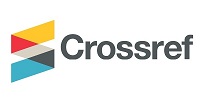Designing Customer Target Recommendation System Using K-Means Clustering Method
Evasaria M. Sipayung(1*), Herastia Maharani(2), Benny A. Paskhadira(3)
(1) Departemen Sistem Informasi Institut Teknologi Harapan Bangsa
(2) Departemen Sistem Informasi Institut Teknologi Harapan Bangsa
(3) Departemen Sistem Informasi Institut Teknologi Harapan Bangsa
(*) Corresponding Author
Abstract
Keywords
Full Text:
PDFReferences
[1] Sipayung E.M., Fiarni Cut, Tanudjaya R., “Decision Support System for Potential Sales Area of Product Marketing using Classification and Clustering Methods”, Proceeding International Seminar on Industrial Engineering and Management, 2015, pp. 33-39.
[2] Sipayung E.M., Fiarni Cut, Tanudjaya R., “Modeling Data Mining Dynamic Code Attributes with Scheme Definition Technique”, Proceeding Electrical Engineering, Computer Science and Informatics, 2014, pp. 25-28.
[3] Larosse, Daniel T., Discovering Knowledge in Data: An Introduction to Data Mining, Wiley-Interscience, 2005.
[4] Kusrini and Lutfi E.T., Algoritma Data Mining, Yogyakarta, Indonesia: Andi, 2009.
[5] Pavel, Berkhin, Survey on Clustering Data Mining Techniques. San Jose, CA: Accrue Software, 2002.
[6] M. Kaur and U. Kaur, “Comparison Between K-Means and Hierarchical Algorithm Using Query Reduction,” International Journal of Advance Research in Computer Science and Software Engineering, Vol. 3, No. 7, pp. 1454-1459, 2013.
[7] E. Turban, J. E. Aronson, and L. P. Ting, Decision Support System and Intelligent System, New Jersey: Pearson Education, Inc, 2005.
[8] Davies, David L., Donald W. Bouldin, “Cluster Separation Measure”. IEEE Transactions on Pattern Analysis and Machine Intelligence, 1(2), 95-104, 2013.
Article Metrics
Refbacks
- There are currently no refbacks.
Copyright (c) 2017 IJITEE (International Journal of Information Technology and Electrical Engineering)

This work is licensed under a Creative Commons Attribution-NonCommercial-NoDerivatives 4.0 International License.
ISSN : 2550-0554 (online)
Contact :
Department of Electrical engineering and Information Technology, Faculty of Engineering
Universitas Gadjah Mada
Jl. Grafika No 2 Kampus UGM Yogyakarta
+62 (274) 552305
Email : ijitee.ft@ugm.ac.id
----------------------------------------------------------------------------






